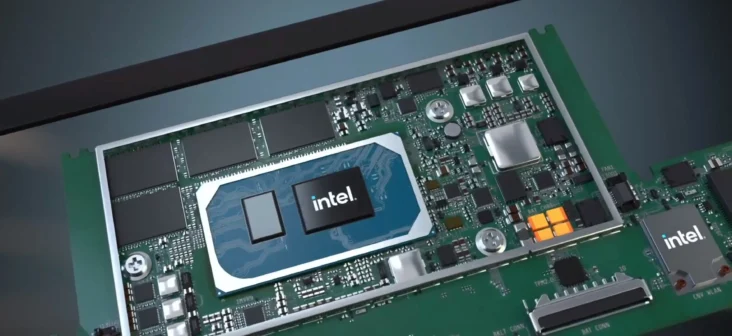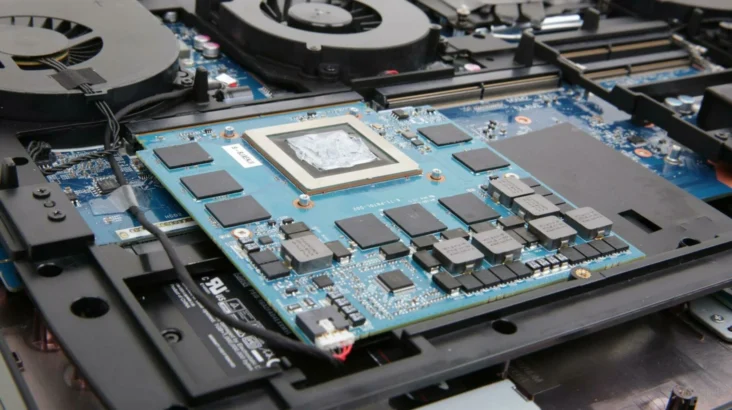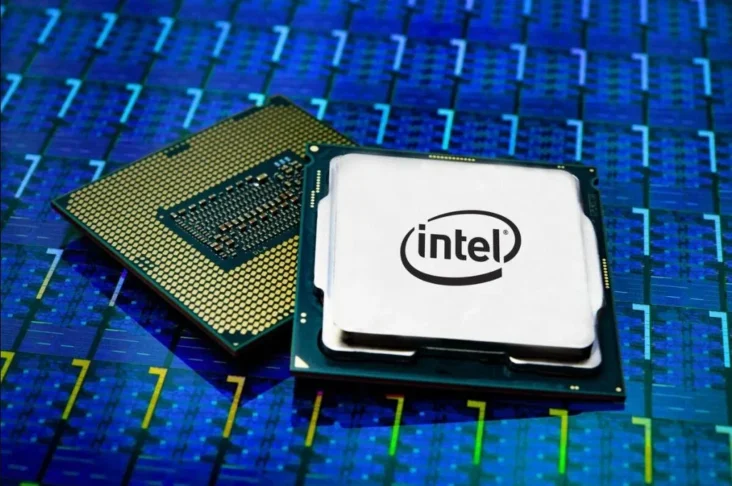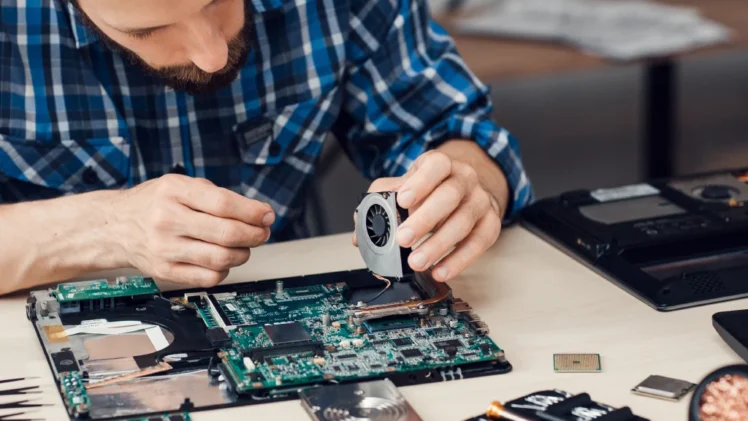Laptops have long had a good reputation for being portable machines that are capable of providing you with access to the internet and allowing you to easily work on the go. However, if you want to use your laptop for something like playing games, which is more hardware intensive, you might need to check if your device has a dedicated graphics card. Most laptops, particularly the lower-end ones, will use integrated graphics rather than a dedicated graphics card. This means that the graphics and CPU memory are shared, which isn’t as powerful.
If you want your next laptop to have a dedicated graphics card, then you will usually need to go for a more expensive high-end laptop or buy a laptop that’s designed for gaming.
How to Figure Out What Type of Graphics Your Laptop Has

Source:alphr.com
If you have a current laptop and aren’t sure what kind of graphics it has, you can easily find out by looking up the tech specs online. Simply search for your laptop’s make and model and look for the graphics card in the tech specs. If your laptop’s GPU isn’t a dedicated one, then it will usually be clearly listed as integrated. On the other hand, if your laptop does have a dedicated graphics card, then you will usually get further information on the type of graphics card that is present inside. Click here to find out more about Intel graphics.
How to Check if a Laptop Has a Dedicated Graphics Card
Going into the tech specs of the laptop that you want to check and heading to the graphics card section is usually the easiest way to find out if your laptop has integrated or dedicated graphics. Or if it’s not obvious from the tech specs, you can search the model of the graphics card that is listed to find out if it’s integrated or dedicated. If you are in the process of buying a new laptop, then the price of the laptop can indicate whether or not the graphics card is more likely to be integrated or dedicated. For the most part, laptops with a dedicated graphics card are not usually going to cost less than $1000.
What is Integrated Graphics?

Source:pcworld.com
Integrated graphics is included with the majority of modern and mainstream central processing units, which are found in all laptops and desktops. This is because some kind of graphics card is needed to process the images you see on the display. Integrated graphics make it possible for computers and laptops to work well on just integrated graphics for the majority of tasks, which reduces the expenses for both manufacturers and consumers. While integrated graphics cards have improved a lot over time, and powerful CPUs have much better graphics compared to in the past, the fact of the matter is that most dedicated GPUs offer better performance as they have their own VRAM and don’t share the CPU’s resources, unlike integrated graphics.
Do I Need a Dedicated Graphics Card?
If you’re wondering whether or not you need a dedicated graphics card, then think about the type of things that you use your computer for on a regular basis. Most of the time, an integrated graphics card offers more than enough for things that we tend to do on our laptops on a regular basis such as browsing the web, word processing, watching videos, or everyday office work. On the other hand, you might benefit from a laptop with a dedicated GPU if you spend a lot of time playing intensive video games or use your laptop for work that involves rendering tasks like video editing and 3D modeling.
Laptops with a Dedicated Graphics Card

Source:windowsreport.com
You can have a laptop with a dedicated graphics card, particularly if you have a high-end, gaming laptop. However, it’s worth noting that the majority of laptops that aren’t designed for gaming will usually not have a dedicated GPU. And those that do are unlikely to utilize desktop-style dedicated graphics cards, mainly because of the fact that these are typically quite large, and not very easy to fit into and use in a laptop. Instead, a dedicated graphics card in a laptop is more likely to be a circuit board with components arranged in the shape of a rectangle or square that is easier to fit inside the chassis of a laptop. As this is different to the typical design and size of a desktop graphics card, it’s not usually possible to use the two interchangeably between the different devices.
Upgrading a Laptop’s Integrated Graphics Card

Source:chillblast.com
In some cases, you might be able to upgrade a laptop that has integrated graphics by adding a dedicated graphics card to improve performance. There are some different ways to do this, including an external graphics card dock or an external graphics card enclosure. These are both typically much easier to do compared to upgrading the graphics internally, which might not always be possible as most laptops today are not designed to be opened up. However, bear in mind that while this gives you the ability to upgrade your laptop’s graphics card, since it’s externally connected rather than connected to the motherboard inside the laptop, it probably won’t be as powerful.
Choosing a Graphics Card Dock
If you want to upgrade your laptop to use a dedicated graphics card, then a graphics card dock can be an ideal way to do this. However, there are some disadvantages, including that most laptops aren’t designed to have an external graphics card connected. You will need to find a suitable dock for your graphics card that will connect to your laptop. You’ll need to have an ExpressCard, Mini PCIe or M.2 connector on your laptop.
Most laptops today have integrated graphics, although powerful machines designed for gaming or 3D rendering may have a dedicated graphics card. Most laptop users don’t need a dedicated graphics card, but if you want to use your laptop for tasks that require this kind of graphics processing power, you can upgrade it using a dock or external enclosure.






